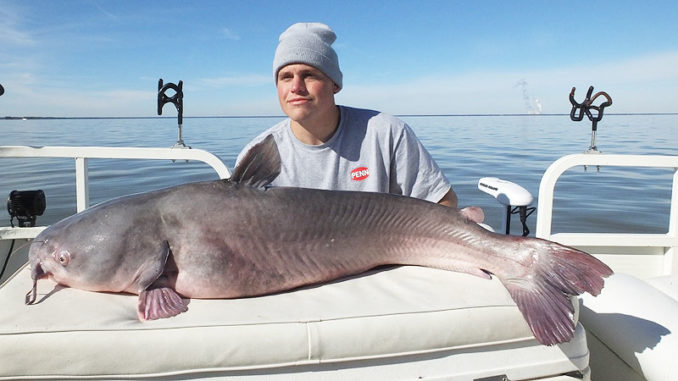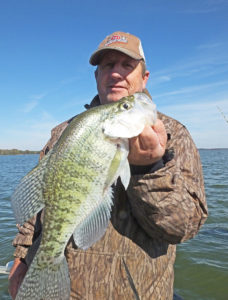
February is winter, but it’s a transition month
Fishermen on the Santee Cooper lakes deal with February’s cold weather. But as the month progresses, the general pattern is a slow, upward trend in water temperatures. An arctic front or two may cause temporary dips in the water temperature or conditions. But Ol’ Man Winter will be getting further in the rearview mirror as the weeks pass.
And this waning of winter begins a trend of better fishing on Lake Marion and Lake Moultrie.
Not all fish are in the same places, but a variety of favored species have most of the water column covered. Largemouth bass are making shallow-water moves. Crappie are moving to mid-depths to stage before the spawn. Stripers are biting in open water and in the Diversion Canal, while some begin the uplake migration for the spawning run. Catfish start deep but often trend toward shallower water as March approaches.
Shallow stuff
Largemouth bass can be found in a variety of depths, but most anglers will be working in 8 feet of water or less for most of February. An assortment of lures can produce. Spinnerbaits, lipless crankbaits, shallow-running crankbaits and soft plastics are all good choices.
As the end of the month approaches, bass will typically begin to make a move to shallower water. If conditions are right, some spawning can occur in late-February. Many big bass will be staging shallow. And if the water temperature pushes past 55 degrees, up to 58 degrees, the bass may move to spawning sites.
Guide Kevin Davis, who owns Blacks Camp, said this first push to the shallows usually includes some of the largest bass in the lakes.
“We don’t get a February spawn every year, but it’s something every bass angler needs to check on late in the month,” said Davis (843-312-3080). “When water conditions are right for a spawn, some of the biggest bass of the year are caught.”
Because of typically dingy and cool water, bass may bed slightly deeper in an early season spawn than they will later, he said.
Mid-depth moves
 Crappie usually suspend over deep brush, but as February progresses and water warms, they will begin to move shallower. By mid- to late February, anglers are working brush and woody cover in the 10- to 15-foot depth range or even shallower. Many of these crappies are huge, roe-laden sows.
Crappie usually suspend over deep brush, but as February progresses and water warms, they will begin to move shallower. By mid- to late February, anglers are working brush and woody cover in the 10- to 15-foot depth range or even shallower. Many of these crappies are huge, roe-laden sows.
Guide Dave Hilton said these prespawn fish will be staging on cover, waiting for the right water temperature to spawn. Also, some are very likely to spawn in these same deeper areas, especially if water conditions are unstable for shallow spawning.
Hilton (843-870-4734) said tight-lining minnows — or jigs tipped with minnows — over deeper, woody cover, are top producers for this prespawn bite.
Striper action is mixed, but these fish will be on the move in the open water.
Guide Bobby Winters said February stripers will transition from deep water near both dams and spread out to more areas. The Diversion Canal typically begins to produce very good fishing as the month progresses.
“Current flow is crucial in the Diversion Canal, but usually in February and March, that’s not an issue,” Winters said. “This current seems to attract forage, and that help hold the stripers.”
Winters (843-709-0626) said using live bait over drops, deep holes, around points and pockets and underwater objects creating eddies are good targets. Also casting bucktails or jigs with soft plastics around the deeper rocky areas are prime spots.
By the end of February, some stripers are making a big move to the upper end of Lake Marion for the annual spawning process. Anglers often catch some quality fish around the Packs Landing area and up to the confluence of the Congaree and Wateree rivers.
Deepwater drama
The drama is all about the big-fish bite, and hooking a big catfish in deep water creates plenty of drama and anxiety. With ample forage still in deep water early in the month, the bite is good by drift-fishing these forage-rich environments. Vertical fishing around the pods of bait is also a good bet.
Winters said February is productive for big catfish, as well as decent numbers, but patience can be the key. The bite may be in extremely deep water early in the month. But as water warms, catfish may move shallower. When the saltwater herring begin to enter the lake and spread onto the shallower flats, the big catfish follow. The transition can begin in late February and soon, some big catfish may be in the shallows.
Winters said prime baits include cut chunks of the big migratory herring, plus shad and white perch.
Getting ready
Crappie on the Santee Cooper lakes will usually spend much of February in 10 to 15 feet of water, staging. There, they wait for water temperatures to rise enough to send them swarming into shallow water for the spawn. If conditions aren’t conducive to shallow spawning, they may spawn around brush in the same mid-depths.


